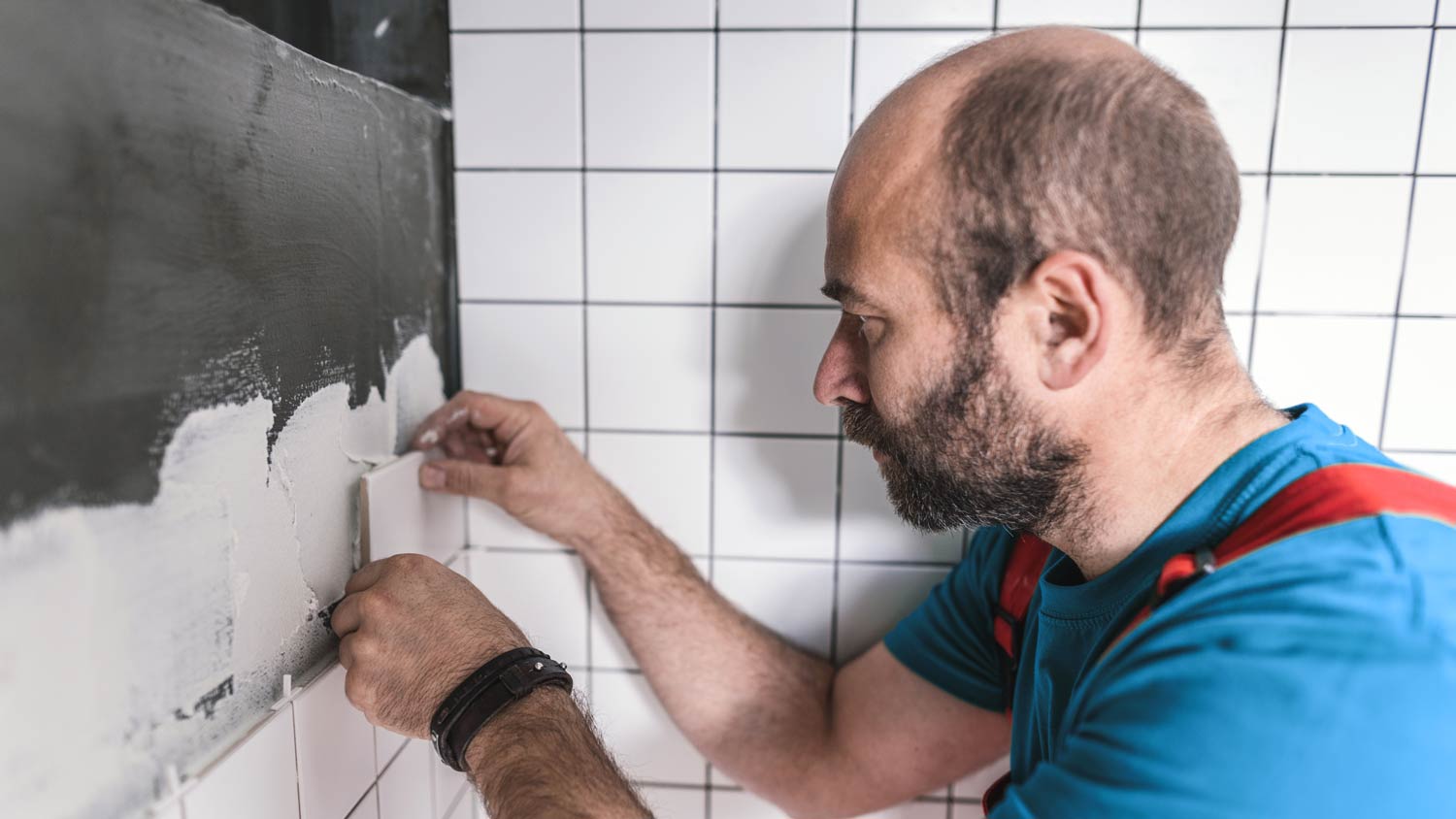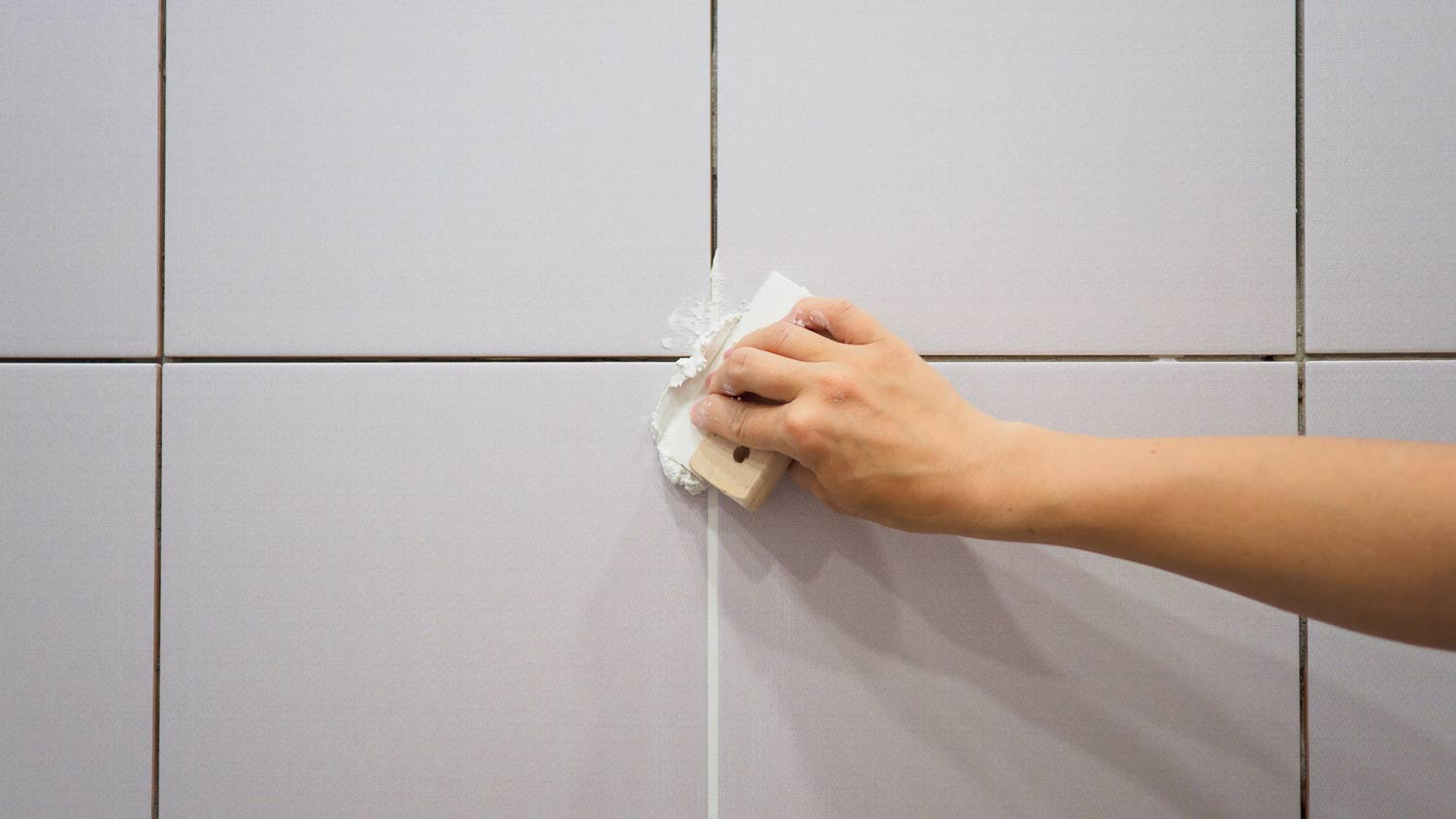
The cost to install porcelain tile depends on materials, size, and whether you DIY or hire a pro. This guide will help you choose the perfect porcelain tile for your home and budget.
Master corner tiling for a seamless installation


Tiling installation seems pretty straightforward, but what about when you get to the inside corners? Knowing how to tile inside corners is key to a successful tiling job. So if you want to bring your shower tile ideas to life (or whatever else you have in mind), this is a great skill to learn.
When you install tile, you usually start from the bottom middle of the wall and work your way up in rows. This means that the tile pieces in your corners aren’t going to fit as they are. So, you’ll have to cut them to size.
Also, you can’t grout inside corners (use caulk instead). As the walls settle, the tiles shift a little. When the corners are grouted, there’s no room for the tiles to move, leading to cracks or other damage. And once you have damaged tiles, you’re susceptible to mold and mildew issues.
Depending on the bathroom design, you might also have inside corners by your tub. If you happen to grout those corner lines, you can potentially cause your tub to flex or crack over time.
Since tile installation costs can reach thousands of dollars, it makes sense to do it right. Learning the basics now will help you avoid common pitfalls later.

To prep for tiling inside corners, make sure you have all of the tiling tools and materials you need on hand. In addition to your tile, mortar, and grout, grab some waterproof flexible silicone caulk.
Also, you’ll need some way to cut your tile. Depending on the tile type, that might be a tile cutter, grinder, or wet saw.
Finally, finish all of the tiling except for the corners before starting the steps below. When working on tiling the wall, you should apply the mortar to the entire wall, including the area by the corners.
Here are five easy steps to tile inside corners.

Grab a measuring tape and figure out the distance between the last tile and the corner wall. Take that number and subtract 1/4 inch. That’s where you’ll want to make your tile cuts.
Use a pencil and draw the cut line on the back of your tiles. To do this precisely, make three measurements on the tile and connect them together with a straight edge. Take your time during this step, because making mistakes here will end up being costly.

The cutting tool you need will depend on your tile type. You may need a manual tile cutter, a grinder, or a wet saw.
Always use protection while cutting tile. This might include gloves, goggles, and a respirator, depending on the material you’re working with.
Manual tile cutters can cut several tile types including ceramic, glass mosaic, porcelain, and terra cotta. If you’re wondering how to install ceramic tile in corners, know that you can use any basic cutter since the material is so soft and easy to cut. If you have more durable materials, like porcelain or glass, you should grab a higher-end cutter to get the job done.
To use a manual tile cutter, place your tile along the top of the cutter. Once you have the cut area aligned properly, slide the cutter from the bottom up.
And while manual tile cutters are the easiest to use out of all of the tools, it doesn’t leave a smooth edge. If you’re looking for pristine tiling work, you should skip the manual cutter and use a wet table saw instead.
For any tile or natural stone, you can use a 4-inch angle grinder with a diamond blade. The grinder is handheld, so you’ll need a steady hand and some skill to get a perfectly straight cut. The cut edge is smoother than what a manual tile cutter produces, but not as smooth as a wet saw.
This tool produces a lot of dust, so use a respirator and work outside.
The wet table saw is a must-have tool for most tile installation jobs. You’ll need to use one for natural stone tiles, as well as for softer tiles like ceramic too.
True to its namesake, this table saw feeds water onto the cutting surface. You place your tile at the base of the cutter, and then slide it upwards into the moving saw.
This tool helps you work quickly and cut multiple tiles within minutes. Plus, it leaves clean edges so your installation will look nice and neat.
Operate the saw outside and take necessary precautions before turning it on. If you’ve never used a table saw before, you should learn the ins and outs of them before attempting to turn it on.
As with any power tool, safety is of the utmost importance. If you’re unsure about the table saw, either pass the job along to a pro or have a knowledgeable friend supervise your first tile cuts with the saw.

Before moving forward with pressing the tile onto the mortar, you should lay out the cut tile pieces so you know which one is going where.
As you tile into a corner, keep in mind that one piece will reach all the way to the wall. The tile piece next to it will overlap with a small gap. This gap should be the same width of one spacer. You’ll eventually fill this space with caulk.

Next, grout the tiles except for the corner seams. Allow the grout to completely dry, which can take 24 to 48 hours depending on the grout type and the temperature in the room.

The last thing you have left to do is to caulk the corner seams. Take your waterproof flexible silicone caulk and apply it from top to bottom.
Then, mix a dash of dish soap in water and put it into a spray bottle. Spray the soapy water onto the caulk, and then use the flat side of a popsicle stick to smooth it out. As you do this, the excess caulk will come off, leaving you with a nice, clean finish.
The most difficult part of knowing how to tile corners is usually the cutting. Instead of trying to use a handheld manual tile cutter (which are like fancy scissors designed for tile) or even a grinder with a diamond saw, it’s usually easiest to go with a manual tile cutter or a wet saw.
If you don’t want to buy a saw because you doubt you’ll need it again, then you can save money by doing a short-term rental from your local hardware store. This is a good way to cut costs when you’re looking at the cost to install tile floors.
Manual tile cutter rentals run about $20 per day, $75 a week, or $230 a month. A small wet saw rental that cuts up to 14 inches is $40 a day, $170 a week, or $515 a month.
As long as you’re comfortable using the cutting tools, then you should be able to handle a corner tile installation. In particular, if you’re working with easy-to-cut materials like ceramic or mosaic glass, then tiling corners should be fairly manageable.
However, if you’re not used to cutting tiles or are working with expensive materials like marble or granite, you might not have room for error. In these cases, it makes sense to hire a tile contractor near you to do the job for you. After all, having to redo cuts or making mistakes may end up being more costly than getting a pro to handle it from beginning to end.
It went very well! The end product was amazing and we keep getting a lot of compliments from friends! M&E were very professional and they made sure we were happy with the product before leaving. They met with us in our home and at the tile shop to make sure we were okay with our tile and...
Involved an extensive bathroom remodel, including removing tub & installing walk in shower, new drywall, custome tile work to ceiling, plumbing, etc. Overall, job was done on time and on budget. Nick & his team were very professional and had high attention to detail. Quality was great. Highly...
This company did a very good job on the brick wall and it looks just amazing. The staff was always professional and was practically OCD on how the bricks were stacked and how they were laid. Although it took longer than expected, I am willing to sacrifice time over perfection anyday. The...
Jay's offered a great price and the job started off so well. I wanted to remodel the master bath and it was a big makeover to remove the existing tile floor, roman tub, and enclosed shower. I wanted the shower moved to where the tub was and the shower area to be converted to storage. I have...
I was very impressed with Miller Cantrell! I live in an old home in which the sewage line that runs from my home to the sewage system is a line of clay tile. These eventually collapse and need to be replaced - an expensive problem and sure to happen at the worst time. I told them that my...
With the help of a contractor, I did a full basement finish, and Dawn Marie and the team at Simply Floors made the flooring portion of my project easy and high quality. Dawn Marie was my primary contact throughout the 3+ months that I was in and out of the store. She was patient, informative,...
From average costs to expert advice, get all the answers you need to get your job done.

The cost to install porcelain tile depends on materials, size, and whether you DIY or hire a pro. This guide will help you choose the perfect porcelain tile for your home and budget.

Whether it’s on your floor, walls, or shower, ceramic tile can add style to your space. So, how much does ceramic tile installation cost? Let’s break it down.

Discover the cost to regrout shower, including average prices, key cost factors, and tips to help you budget for a fresh, watertight shower.

If you’re starting a bathroom refresh, you may wonder if you can paint shower tile. Find out everything you need to know about shower tile paint in this guide.

You don’t have to stick with traditional tile for your backsplash. Learn about unique and affordable backsplash alternatives to beautify and protect your kitchen.

Learn how to tile a shower with our comprehensive DIY guide. Following these step-by-step instructions will result in a professional-looking tile finish.